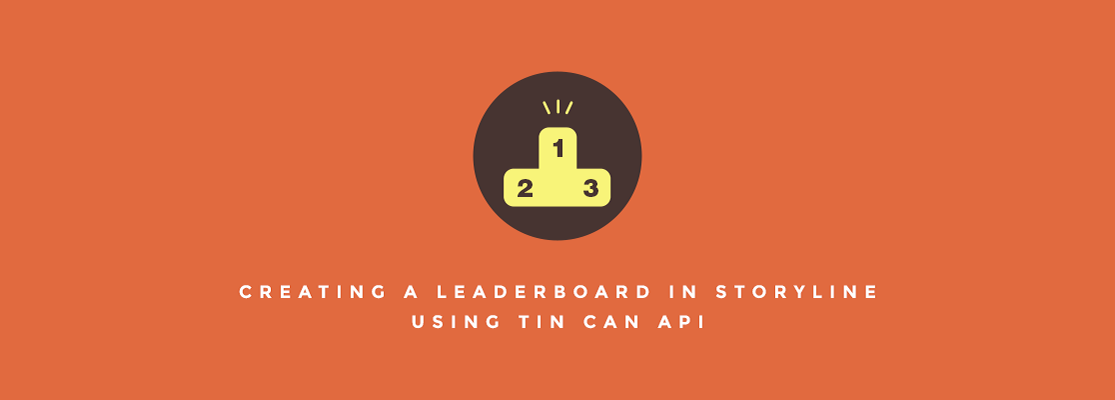CREATING A LEADERBOARD IN STORYLINE USING TIN CAN API
What is the first thing that comes to mind when you think of gamifying a course?
Points? Badges? Scores? Levels?
While all of this can be added in a course, it is not until you include a leaderboard that the gamification experience feels ‘complete’. With a leaderboard, there is a social element involved, with users pitched against one another, and engaged in constructive competition with their peers.
Up until this point, there have been few ways to add a leaderboard to a course without the support of a gamified platform (an LMS or other).
Now, with Tin Can API, it is possible to add a leaderboard to a Storyline course, without any such dependence on a gamified LMS or other system.
In this post, we share an example of a quiz we developed in Storyline. In addition to being a regular assessment that sends learner responses to the LMS, it also displays a leaderboard of the top 5 scorers. How did we do this?
At the beginning of the quiz, we captured the learner’s data by having them enter basic details – their name and e-mail ID.
With the help of ‘tincan.js’, we sent the score from Storyline to a Learning Record Store (LRS) using JavaScript, and we received data back from the LRS into the Storyline course. The data we received from the LRS included the names and scores of the top five scorers. Once we received the data, we computed the rank and displayed the details (name, score and rank) on a leaderboard.
We also created a voting system using the same concepts in Tin Can API.
If you are familiar with JavaScript you can adapt this to work in Captivate, Lectora, HTML5, etc.
And with Tin Can API, the possibilities of what you can do, sending data to the LRS and getting it back, are limitless!
Click here to experience the quiz. Note that you will be asked to enter your name and e-mail ID. This is just to make sure we have clean data in the database and to display on the leaderboard. Don’t worry, we hate spam as much as you do. We will never put you on any mailing list, or share your details with anyone.






